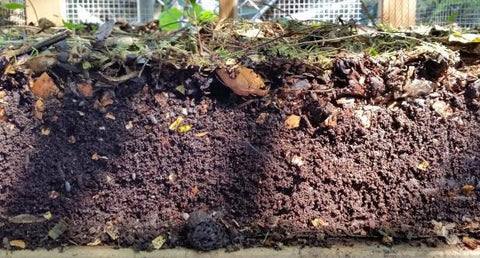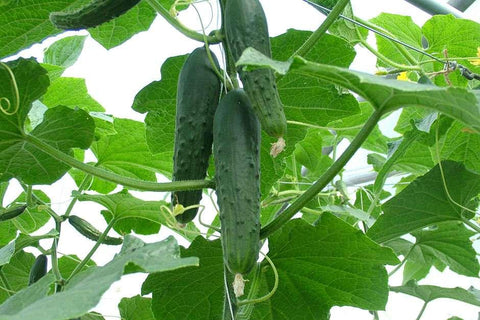California, with its diverse landscapes and vibrant ecosystems, offers a gardener’s paradise. Whether you’re a seasoned horticulturist or a green-thumb novice, knowing what plants thrive in California can make your gardening experience rewarding and eco-friendly. Let's dive into the unique climate and soil of the Golden State and explore the benefits of planting native and drought-tolerant species.The following content also has some reference value for raised garden beds.
Understanding California's Unique Climate and Soil
California’s climate varies dramatically from coastal breezes to inland heat, mountain chill, and desert aridity. This variety influences soil types, from sandy loams to clay-heavy earth, each impacting plant growth differently. Understanding your local climate zone and soil composition is crucial for selecting the right plants that will thrive in your garden.
Benefits of Planting Native and Drought-Tolerant Species
Native plants are well-adapted to local conditions, requiring less water, fertilizer, and pesticides. They also support local wildlife, creating habitats for birds, bees, and butterflies. Drought-tolerant species, on the other hand, are lifesavers during California’s dry spells, ensuring your garden remains lush and vibrant with minimal water usage.
Exploring California's Climate Zones
California is divided into several climate zones, each with its own unique weather patterns. Coastal areas enjoy mild, wet winters and cool summers. Inland regions face hotter summers and cooler winters. Mountain zones experience cold winters and mild summers, while deserts are known for their extreme heat and minimal rainfall. Identifying your zone helps in choosing plants that will thrive in your specific conditions.
Choosing Plants Based on Your Region: Coastal, Inland, Mountain, and Desert
- Coastal: Opt for salt-tolerant, wind-resistant plants like sea lavender and coastal sagebrush.
- Inland: Hardy perennials and heat-tolerant shrubs such as lavender and rosemary do well.
- Mountain: Cold-hardy species like evergreens and wildflowers thrive here.
- Desert: Succulents, cacti, and other drought-resistant plants are ideal for the arid climate.

Native Plants of California
Celebrating California's Native Flora: Why Native Plants Matter
Native plants have evolved to thrive in California’s unique ecosystems. They require less water, are resistant to local pests, and help maintain the natural landscape. By planting natives, you contribute to biodiversity, support local wildlife, and create a garden that’s both beautiful and sustainable.
Top Native Plants for California Gardens: From Redwoods to Chaparral
- Redwoods: Towering giants perfect for Northern California gardens.
- California Poppy: The state flower, offering bright orange blooms.
- Toyon: A versatile shrub with red berries that attract birds.
- Chaparral Sage: Aromatic and resilient, ideal for dry conditions.
Drought-Tolerant Plants
Water-Wise Gardening in California: The Importance of Drought-Tolerant Species
With frequent droughts, water conservation is essential in California. Drought-tolerant plants require minimal irrigation once established, making them perfect for a sustainable garden. They are also often more resilient to local pests and diseases, reducing the need for chemical treatments.
Low-Maintenance Beauties: Drought-Tolerant Flowers, Shrubs, and Trees
- Succulents: Aloe, agave, and echeveria offer stunning shapes and colors.
- Lavender: Fragrant and hardy, perfect for garden borders.
- California Lilac: Beautiful blue blooms with minimal water needs.
- Olive Trees: Mediterranean charm with low water requirements.

Edible Plants for California Gardens
From Garden to Table: Growing Your Own Edibles in California
California’s climate is ideal for growing a wide range of edible plants, allowing you to enjoy fresh, home-grown produce. Whether you have a spacious backyard or a small balcony, there are plenty of options for cultivating delicious fruits, vegetables, and herbs.
Best Vegetables, Herbs, and Fruits for California Climates
- Tomatoes: Thrive in sunny spots with well-drained soil.
- Citrus Trees: Lemons, oranges, and limes love the California sun.
- Herbs: Basil, rosemary, and sage grow abundantly.
- Leafy Greens: Spinach, kale, and lettuce flourish in cooler seasons.
Attracting Wildlife with California-Friendly Plants
Creating Habitat Havens: Plants That Support California Wildlife
Gardening isn’t just about plants; it’s about creating a thriving ecosystem. By planting species that attract pollinators and provide shelter, you can turn your garden into a sanctuary for local wildlife.
Butterfly Gardens, Bee Buffets, and Bird-Friendly Landscapes
- Milkweed: Essential for monarch butterflies.
- Salvia: A magnet for bees and hummingbirds.
- Manzanita: Offers berries for birds and nectar for pollinators.
- Yarrow: Attracts a variety of beneficial insects.
Landscaping with Succulents and Cacti
Embracing the Arid Aesthetic: Designing with Succulents and Cacti
Succulents and cacti are perfect for adding a touch of the exotic to your garden. Their diverse shapes and colors create stunning visual interest while being incredibly low maintenance.
Tips for Growing Healthy and Beautiful Succulent Gardens
- Well-Draining Soil: Essential to prevent root rot.
- Sun Exposure: Most succulents thrive in full sun.
- Water Sparingly: Only when the soil is completely dry.

Fragrant Plants for California Gardens
Inviting Aromas into Your Outdoor Space: Fragrant Plants for California Gardens
Fragrance adds an extra dimension to your garden, making it a sensory delight. From sweet-smelling flowers to aromatic herbs, fragrant plants can transform your outdoor space into a fragrant oasis.
Best-Smelling Flowers and Herbs for Your Garden Oasis
- Jasmine: Enchanting evening scent.
- Lavender: Relaxing and soothing aroma.
- Rosemary: Pungent and invigorating.
- Gardenia: Intense, sweet fragrance.
Colorful Blooms Year-Round
Maintaining a Kaleidoscope of Color: Flowers for Every Season in California
Ensure your garden bursts with color all year long by planting a variety of flowering plants that bloom in different seasons. This not only adds visual interest but also supports pollinators throughout the year.
Planting for Continuous Bloom: Annuals, Perennials, and Bulbs
- Spring: California poppy and lilac.
- Summer: Sunflowers and zinnias.
- Fall: Asters and chrysanthemums.
- Winter: Camellias and hellebores.
Shade-Loving Plants for California Landscapes
Beat the Heat: Shade-Loving Plants for California Gardens
Shade gardens offer cool retreats and can be just as vibrant and lush as sun-filled areas. Selecting the right shade-loving plants ensures these spots are both beautiful and functional.
Creating Cool Retreats: Plants for Shaded Patios, Decks, and Courtyards
- Hostas: Large, lush foliage.
- Ferns: Delicate, feathery fronds.
- Impatiens: Bright blooms that thrive in shade.
- Japanese Maple: Elegant and shade-tolerant.
Sustainable Gardening Practices
Eco-Friendly Gardening Tips: Practices for a Greener Garden
Sustainable gardening minimizes environmental impact and promotes a healthy ecosystem. Implementing eco-friendly practices helps conserve resources and create a thriving, resilient garden.
Composting, Mulching, and Rainwater Harvesting in California Gardens
- Composting: Recycles kitchen scraps into rich soil.
- Mulching: Conserves water and suppresses weeds.
- Rainwater Harvesting: Collects and uses natural rainfall.
Dealing with Common Garden Pests and Diseases
Keeping Your Garden Healthy: Identifying and Treating Common Pests and Diseases
Maintaining a healthy garden involves vigilance against pests and diseases. Early identification and treatment are key to keeping your plants thriving.
Natural Pest Control Methods for California Gardens
- Neem Oil: Effective against many pests.
- Beneficial Insects: Ladybugs and predatory wasps.
- Companion Planting: Repels pests and supports plant health.
Container Gardening for Small Spaces
Growing Up, Not Out - Thriving in Tight Spaces with Container Gardening
Container gardening is perfect for small spaces, allowing you to grow a variety of plants without a traditional garden bed. It’s ideal for balconies, patios, and windowsills.
Choosing the Right Containers and Plants for Balconies, Patios, and Windowsills
- Herbs: Basil, mint, and thyme in small pots.
- Vegetables: Cherry tomatoes and peppers in larger containers.
- Flowers: Petunias and marigolds for vibrant color.
Sustainable Practices for Your California Garden
In the vast and diverse landscape of California, gardening is not just a hobby; it's a way of life. As stewards of our environment, incorporating sustainable practices into our gardening routine is essential. By embracing eco-friendly techniques, we not only nurture our gardens but also contribute to the health of our planet. Here are some sustainable practices to consider for your California garden:
Composting Basics: Turning Waste into Garden Gold
Composting is nature's way of recycling organic matter, transforming kitchen scraps and yard waste into nutrient-rich soil amendments. To start composting, designate a space in your garden for a compost bin or pile. Layer organic materials such as fruit and vegetable scraps, yard trimmings, leaves, and coffee grounds. Add a sprinkle of garden soil or compost accelerator to introduce beneficial microbes that speed up decomposition. Turn the compost regularly to aerate and mix the materials, and in a few months, you'll have dark, crumbly compost ready to enrich your garden soil.
Harnessing Renewable Resources: Solar Power for Your Garden
In sunny California, harnessing solar power for your garden is a sustainable and cost-effective option. Solar panels can be installed to power irrigation systems, outdoor lighting, and other garden amenities. By utilizing solar energy, you reduce your reliance on fossil fuels and decrease your carbon footprint. Solar-powered garden lights are an excellent way to illuminate walkways and outdoor living spaces without consuming electricity. Additionally, solar-powered water pumps can efficiently irrigate your garden, utilizing clean energy to keep your plants thriving. Embracing solar power not only saves you money on utility bills but also promotes environmental stewardship.
Attracting Pollinators and Beneficial Insects
Pollinators play a crucial role in the ecosystem by facilitating the reproduction of flowering plants. By attracting pollinators to your garden, you enhance biodiversity and increase fruit and seed production. Planting pollinator-friendly gardens involves selecting nectar-rich flowers and providing habitat and nesting sites for bees, butterflies, and other beneficial insects. Choose a variety of native plants with different bloom times to ensure a continuous supply of food for pollinators throughout the growing season. Avoid using pesticides and herbicides that harm pollinators and opt for natural pest control methods instead.
Natural Pest Control Methods
Maintaining a balance between pests and beneficial insects is key to a healthy garden ecosystem. Instead of resorting to chemical pesticides, employ natural pest control methods to manage garden pests effectively. Introduce predatory insects such as ladybugs, lacewings, and parasitic wasps, which feed on common garden pests like aphids, caterpillars, and mites. Planting companion plants with pest-repelling properties, such as marigolds, basil, and lavender, can deter unwanted insects and attract beneficial ones. Additionally, practicing crop rotation, mulching, and handpicking pests can help minimize infestations without harming the environment. By embracing natural pest control methods, you protect beneficial insects, safeguard your garden's health, and promote a thriving ecosystem.
California’s rich botanical diversity offers endless possibilities for creating a vibrant and sustainable garden. Whether you’re drawn to native plants, drought-tolerant species, or fragrant blooms, the Golden State provides a canvas for cultivating beauty, sustainability, and connection with nature. Begin your garden journey today and watch your outdoor space flourish with life, color, and purpose. Happy gardening!









